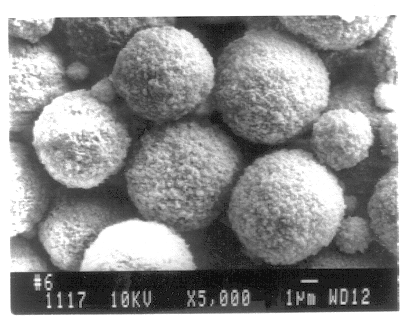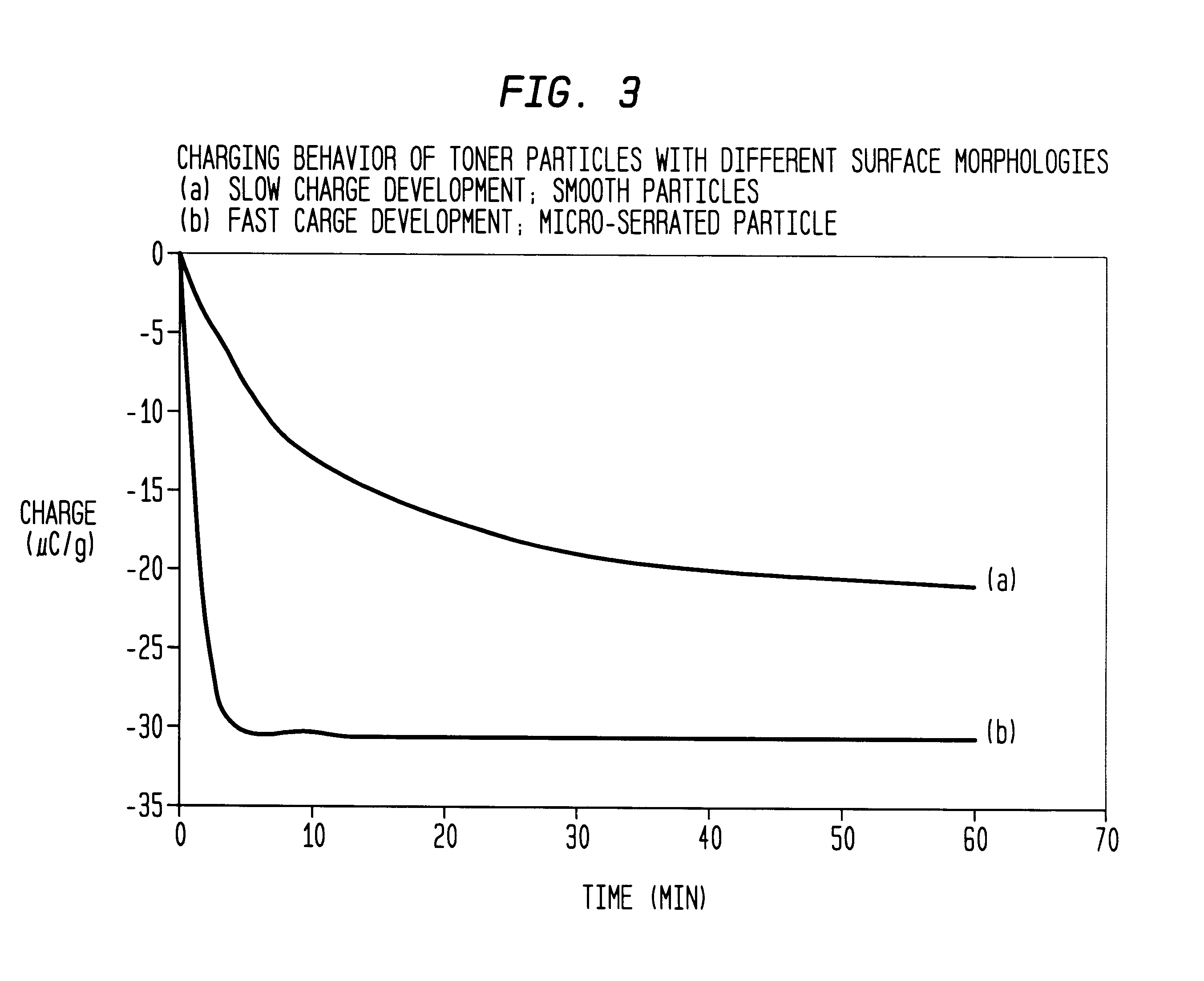Micro-serrated, dyed color toner particles and method of making same
a technology of dyed color and toner particles, which is applied in the field of microserration, dyed color toner particles and the same making method, can solve the problems of dye bleeding, loss of color fidelity, and unsuitability for producing high-resolution toner particles, and achieve the effect of preventing coalescence of resin particles
- Summary
- Abstract
- Description
- Claims
- Application Information
AI Technical Summary
Benefits of technology
Problems solved by technology
Method used
Image
Examples
example 1
Preparation of a Cationically Dyeable Polyester Resin Particles
A cationically dyeable polyester resin was prepared by a melt condensation process. Into a 10-liter glass reaction vessel fitted with a paddle-type stirrer and a 20 cm fractionating column, dimethyl terephthalate (941 grams, 4.85 moles), dimethyl isophthalate (970 grams, 5.0 moles), sodium salt of dimethyl 5-sulfoisophthalate (44.4 grams, 0.15 moles), and 1,2 propylene glycol (1520 grams, 20 moles) were charged. Further, 1.4 grams of titanium tetra-isopropoxide and 5.0 grams of IRGANOX 1010 (available from Clariant Corporation, East Hanover, N.J.) were added as the ester exchange catalyst. The reactants were charged at ambient temperature and purged with argon gas for about 1 hour. The reactant mixture was then heated to 150.degree. C. with the stirrer on at 50 rpm to form a homogeneous melt. Subsequently, the reaction mixture is heated from 150.degree. C. to 200.degree. C. under a flowing argon atmosphere over 4 hours a...
example 2
Cyan Polyester Toner
Into a 250-ml flask equipped with an impeller-type agitator, 48 grams of polyester resin particles of Example 1, 72 grams of Isopar-L.RTM., and 12 grams of Genapol 26-L-1 were charged. The mixture was agitated at 100 rpm speed. The temperature was raised to 50.degree. C. and maintained at the temperature for 30 minutes. Then 5 grams of ethanol as the dyeing assistive and 0.56 gram of Astrazon.RTM. Blue BG 200 (a CI Basic Blue 3 dye available from DyStar L. P., Charlotte, N.C.) were added to the mixture. The dyeing mixture was maintained under the condition. The particles were sampled to determined the optical absorbance using a spectrophotometer at different intervals. After 60 minutes of dyeing, the absorbance reached a limiting value, indicating that the dyeing is complete. Subsequently, 0.72 g of Bontron.RTM. E-84 (a negative charging charge control agent based on a zinc salt available from Orient Chemical Corporation of America, Springfield, N.J.) was added i...
example 3
Cyan Polyester Toner Using a Larger Amount of Dyeing Assistive
The procedure of Example 2 was repeated with the exception that the amount of Ganex V-220 was increased to 50 g and the amount of ethanol to 10 g. The increased amount of ethanol accelerated the dyeing process substantially and the dyeing was complete in about 30 minutes. Cyan Toner No. 2 was thus obtained. The volume average diameter of the finished toner particles was 4.8 microns and the span 0.9. Scanning electron microscopy examination of the toner particles showed that the particles were substantially spherical with micro-serrated surface texture. The surface roughness index was 2.1.
PUM
 Login to View More
Login to View More Abstract
Description
Claims
Application Information
 Login to View More
Login to View More - R&D
- Intellectual Property
- Life Sciences
- Materials
- Tech Scout
- Unparalleled Data Quality
- Higher Quality Content
- 60% Fewer Hallucinations
Browse by: Latest US Patents, China's latest patents, Technical Efficacy Thesaurus, Application Domain, Technology Topic, Popular Technical Reports.
© 2025 PatSnap. All rights reserved.Legal|Privacy policy|Modern Slavery Act Transparency Statement|Sitemap|About US| Contact US: help@patsnap.com



